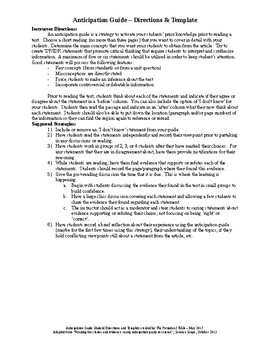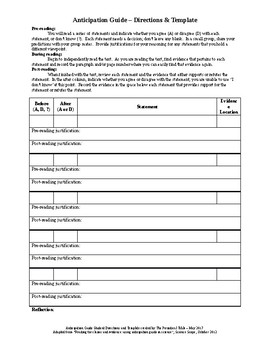Anticipation Guide - Student Directions and Template
- Word Document File
Description
An anticipation guide is a strategy to activate your students’ prior knowledge prior to reading a text. Choose a short reading (no more than three pages) that you want to cover in detail with your students. Determine the main concepts that you want your students to obtain from the article. Try to create T/F/IDK statements that promote critical thinking that require students to interpret and synthesize information. A maximum of five or six statements should be utilized in order to keep student’s attention. Good statements will possess the following features:
- Key concepts (from standards or from a unit question)
- Misconceptions are directly stated
- Force students to make an inference about the text
- Incorporate controversial or debatable information
Prior to reading the text, students think about each of the statements and indicate if they agree or disagree about the statement in a ‘before’ column. You can also include the option of 'I don't know' for your students. Students then read the passage and indicate in an ‘after’ column what they now think about each statement. Students should also be able to put down the location (paragraph and/or page number) of the information so they can find the region again to reference or reread.



